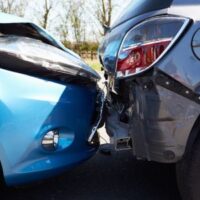Comparative Negligence in Philadelphia Automobile Accident Cases

The legal concept of comparative negligence plays a significant role in Philadelphia auto accident cases. This doctrine affects how compensation is awarded based on the shared fault of the involved parties. Understanding how comparative negligence works in Pennsylvania can help you navigate the complexities of an auto accident claim more effectively.
Comparative negligence is a legal principle used to determine the liability and damages based on the degree of fault of each party involved in an accident. Unlike contributory negligence, which can completely bar recovery if the plaintiff is even slightly at fault, comparative negligence allows for a more proportional approach.
How Comparative Negligence Works in Pennsylvania
Pennsylvania follows a modified comparative negligence rule with a 51% bar. This means that a damaged party can recover compensation only if their share of the fault does not reach 51%. If it does, they are barred from recovering damages. The compensation amount will be reduced by the percentage of fault assigned to them. For instance, if you are found to be 30% at fault in an accident and the total damages amount to $100,000, you would only be eligible to recover $70,000.
Impact on Compensation
- Damage Calculation: The total amount of compensation you are eligible to receive will be reduced by your percentage of fault. This adjustment ensures that each party pays or receives a fair amount relative to their responsibility for the accident.
- Insurance Claims: Insurance companies often use comparative negligence as a basis for adjusting claims. They will assess the actions of each driver to determine their respective liabilities.
- Legal Proceedings: In court, comparative negligence can complicate legal proceedings. Both sides may present evidence trying to shift blame to the other party to minimize their own liability and maximize their potential recovery.
Examples of Comparative Negligence in Auto Accidents
Scenario 1: If a driver runs a red light and hits another driver who was speeding, both drivers may be deemed partly at fault. The degree of fault will determine how much each can recover from the other.
Scenario 2: If a pedestrian is hit while jaywalking, the pedestrian and the driver may share liability. The compensation for the pedestrian’s injuries will be reduced by their share of fault.
Why Legal Help is Essential
Navigating the nuances of comparative negligence claims can be complex. Legal representation is invaluable in managing negotiations with insurance companies, filing a lawsuit, and presenting your case in court. A skilled lawyer can help ensure that fault is fairly assessed and that you receive the compensation you deserve based on the actual circumstances of the accident.
Contact The Villari Law Firm
Proving fault is a critical aspect of auto accident claims in Pennsylvania due to the state’s comparative negligence rules. Whether negotiating with insurance adjusters or presenting your case in court, having a Philadelphia personal injury law firm with expert understanding of how comparative negligence works can help you maximize the financial recovery of your auto accident claim.
If you have been involved in an auto accident in Pennsylvania, The Villari Law Firm can help you understand and navigate the complexities of comparative negligence in your case. Our experienced attorneys are committed to advocating for your rights and ensuring you receive maximum compensation for your injuries and losses. Contact us today for a free consultation to discuss your legal options.
Source:
legis.state.pa.us/WU01/LI/LI/CT/HTM/42/00.071.002.000..HTM
